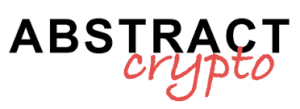According to what was reported by Justin Sun in a tweet on X, the Tron ecosystem is working to eliminate fees in stablecoin exchanges.
The announcement of the blockchain founder highlights the willingness to bring more capital to Tron and to make the user experience more appealing.
The news follows another support offered by Sun, this time concerning the Ethereum network and its Foundation, protagonist of a recent media shitsorm.
Let’s see all the details below.
Tron aims to reduce fees for stablecoin transactions
Justin Sun, founder of the Tron blockchain, has just reported on X that his team is working on a plan to reduce fees in the stablecoin sector.
In particular, the goal of the Chinese billionaire entrepreneur would be to bring commissions to zero on his own chain for stable currency exchanges.
The ultimate goal is to provide a significant advantage to the users of its network, with a convenient, fast, and free experience.
TRON is happy to announce that our development teams are working on drastically reducing fees to deliver a zero-fee stable coin transactions experience for users. Stay tuned!
— H.E. Justin Sun
(@justinsuntron) January 23, 2025
At the moment Tron already represents in itself a blockchain “convenient” regarding operations in stablecoin.
On the chains, there are various coins pegged to the value of the dollar like USDT, USDC, and TUSD, in addition to the decentralized ones issued by TronDAO like USDD and USDJ.
In all cases, transferring one of these stablecoins from one address to another involves paying very low fees, sometimes less than a dollar.
Many users in the crypto world use Tron almost exclusively to move USDT, given the low cost compared to what is required on the Ethereum blockchain with ERC-20 assets.
Justin Sun, however, wants to grow even more, bringing the fees for the transfer of this type of asset to zero, making the blockchain even more popular. This policy could consistently increase the adoption of cryptocurrencies in the retail payments sector, contributing to the brand reputation of Tron.
Consider that according to the data from on-chain analyses conducted by Visa, Tron represents the dominant infrastructure in the total volume of stablecoin transactions.
In particular, since April 2023 it processes billions of dollars in trades every day with a higher volume compared to other competitor networks like Ethereum, Solana, and BSC.
The stablecoin market on the Tron blockchain
According to the data from DefiLlama, the stablecoin market is currently worth 214.3 billion dollars, up by 3.3% in the last 7 days.
The Tron blockchain represents a significant portion of this capitalization, boasting approximately 60 billion dollars of bridged assets in stablecoin.
Tether (USDT) is by far the largest currency present in Justin Sun’s chain, with 43.33% of the circulating supply minted within it.
Consider that considering only the native assets, Tron has a TVL of 7.31 billion dollars, 8 times lower than the market cap of the stablecoins that circulate within it.
To make a comparison, on Ethereum stablecoins represent only 70% more than the TVL of the chain.
All this highlights a picture for Tron of strong dependence on this type of stable asset, responsible for the majority of the network’s revenue.
Recently, Justin Sun himself shared a tweet from CoinGecko where the earnings of the various blockchains in 2024 are reported.
At the top of the ranking is Ethereum with 2.48 billion dollars, generated by the various services offered by Vitalik Buterin’s platform.
In second place we find Tron itself with annual fees amounting to 2.15 billion dollars, a large portion of which is related to stablecoin transactions.
With the plan to bring fees to zero, the network might temporarily see its revenue decrease, however increasing its on-chain presence.
Which blockchains earned the most fees in 2024?
@Ethereum earned the most, with an annual total of $2.48B in gas fees. @trondao followed closely with $2.15B, while #Bitcoin trailed behind with $922.89M.
Read the full study: https://t.co/GcO1HSApPS pic.twitter.com/g7M21vY0iN
— CoinGecko (@coingecko) January 22, 2025
Justin Sun also comments on the poor financial management of Ethereum Foundation: how to bring ETH to 10,000 dollars
In addition to the issue of fees for stablecoin transactions on Tron, Justin Sun also spoke on a matter concerning the Ethereum Foundation (EF).
In recent days, on X, there is an actual shitstorm against Vitalik and the management, considered inefficient, of the Foundation’s finances.
Users have complained that the company has not done enough to bring more value to ETH, resulting in a catastrophic bear price dynamic.
To further worsen the situation, there would have been various occasions when the EF would have chosen to sell ETH on the market to pay the operational costs of the infrastructure.
In this regard, Justin Sun has publicly stated that if Ethereum were under his leadership, ETH would be at least 10,000 dollars.
In a tweet, the head of Tron, who is also an ETH holder, reported his operational plan aimed at the rebirth of the chain and at increasing the perception of value in the eyes of investors.
In particular, Sun would block public sales of ETH, replacing them with practices such as borrowing of stablecoin and staking yields.
Furthermore, it would impose heavy duties on L2, thus doubling the annual revenue, and it would decrease the rewards for the nodes, positively affecting the inflation of the token.
Finally, it would initiate a buy back strategy of ETH on the market, increasing its buying pressure in an attempt to boost the price.
We will see in the coming days if responses will come from Vitalik to the suggestion of the patron of Tron, and if the EF will actually do something to improve financial management.
If EF and Ethereum Were Under My Leadership
“#ETH to $10,000”
My First Week Plan
1. Halt ETH Sales immediately and Optimize Revenue
EF will immediately cease selling ETH for at least three years. Operational costs will be covered through AAVE lending, staking yields, and…
— H.E. Justin Sun
(@justinsuntron) January 22, 2025


